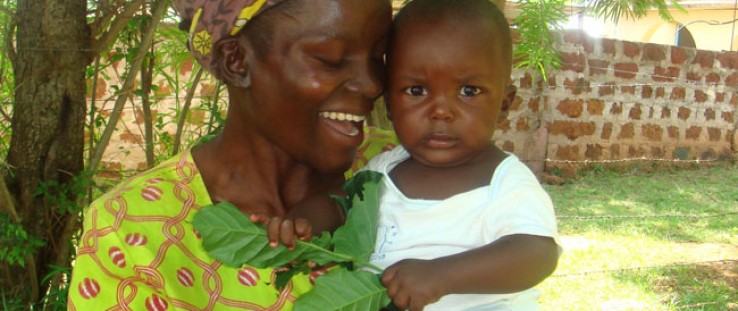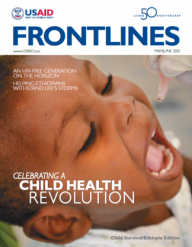 Esther Ouma with her son, Barrack.
Bibianne Situma, AMREF
Esther Ouma with her son, Barrack.
Bibianne Situma, AMREF
 Esther Ouma with her son, Barrack.
Bibianne Situma, AMREF
Esther Ouma with her son, Barrack.
Bibianne Situma, AMREF
Health Worker Article Series
Madagascar: Keeping Mothers Safe to Be Mothers
Kenya: Support from Clinic to Hospital to Home
Zambia: Coordinating Roles and Connecting with Care
Mozambique: Strength in Community Care
Bangladesh: Family Planning for Healthier Futures
Timor-Leste: Walking Together on the Long Road to Health
Esther Ouma is a 25-year-old mother from Nangoga village in the Busia district of western Kenya.
“After marriage, I lost two babies due to what I thought was witchcraft. However, during my third pregnancy, I was visited by a [community health worker], who encouraged me to join a mother-to-mother support group. During the support group sessions, I learned that it is essential to visit an antenatal care clinic early in pregnancy. During one of the visits to the clinic, I was tested for HIV, and was found to be positive. I was counseled and encouraged to deliver from a health facility to minimize chances of infecting our baby. As advised, I gave birth at the hospital and had a bouncing baby boy whom we named Barrack. During labor, I was given [the HIV drug] Nevirapine and after delivery our baby was also given antiretrovirals [ARVs].”
The World Health Organization recommends that HIV-infected mothers be put on ARVs so that, like Ouma, they can exclusively breastfeed their babies for at least six months, which is globally recognized to be a best practice for mothers and infants. Barrack was tested twice and was found to be HIV-negative. He is taking Septrin to prevent the transmission of the disease.
Ouma attributes her health and that of her child to, in large part, the support she received from the community health worker. “I will forever be grateful to the community health worker, AMREF and the Ministry of Health,” Ouma said. AMREF, which stands for African Medical and Research Foundation, is an international health NGO with global headquarters in Kenya and U.S. headquarters in New York.
In 2004, 67 percent of the total population of 415,000 in the Busia district of western Kenya lived in absolute poverty. Malaria was the leading cause of health-facility admissions, and the HIV prevalence rate among pregnant women was approaching 20 percent.
With funding from USAID, AMREF implemented the Busia Child Survival Project from October 2005 through September 2010. Targeting 50,000 women of reproductive age and 30,000 children under 5, the project worked to increase access to and use of maternal and newborn care services, reduce HIV infections among newborns, and reduce malaria incidence among pregnant women and children under 5.
By using front-line workers to connect community members with the formal health system, notable improvements have been made in the Busia district. During the five-year project, the percentage of births attended by a midwife, nurse or doctor more than doubled, from 26 percent to 56 percent; mothers who knew how to prevent maternal-to-child transmission of HIV jumped from 23 percent to 84 percent; and children sleeping under insecticide-treated bed nets increased from 70 percent to 93 percent.









Comment
Make a general inquiry or suggest an improvement.